Costa Mesa, CA Pollen and Allergy Report for Summer 2023
Pollen Allergy Trends in Costa Mesa, CA
When is pollen lowest in Costa Mesa, CA?

October
Lowest month total PPM
Avg. PPM
When is pollen highest in Costa Mesa, CA?

January
Highest month total PPM
Avg. PPM
How does pollen in Costa Mesa, CA compare to California?
Costa Mesa has a higher average PPM than the state of California.
Costa Mesa yearly avg PPM:
California yearly avg PPM:
How does pollen in Costa Mesa, CA compare to the USA?
Costa Mesa has a lower average PPM than the USA.
Costa Mesa yearly avg PPM:
USA yearly avg PPM:
Is pollen worse this year in Costa Mesa, CA?
Spring 2023 was worse than spring 2022.
Spring 2023 PPM:
Spring 2022 PPM:
Average PPM in Costa Mesa, CA
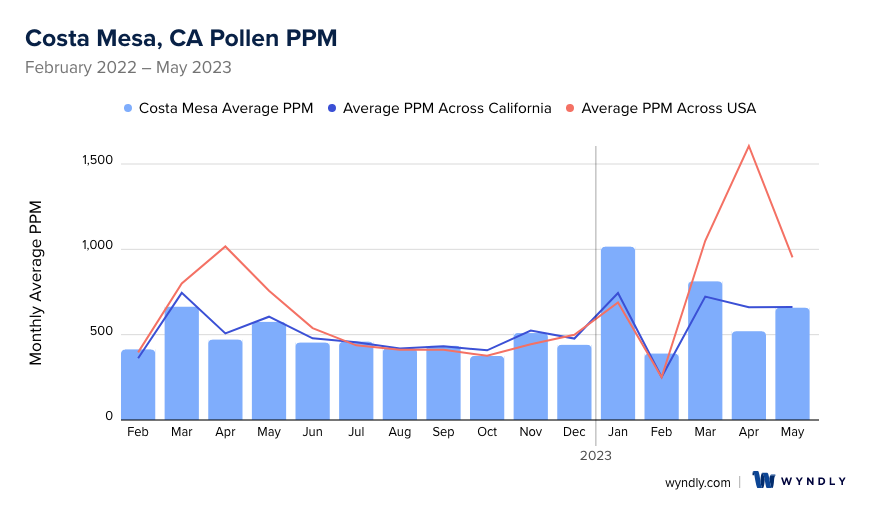
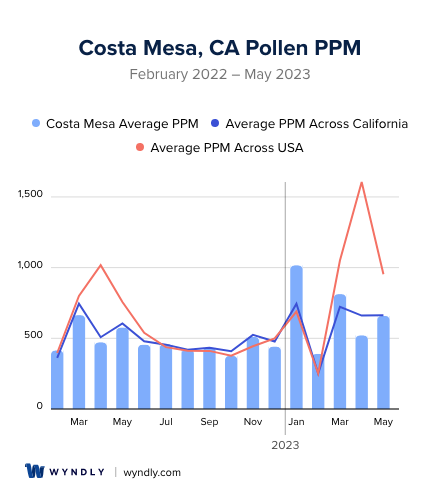
Costa Mesa, CA Pollen and Allergy Breakdown by Month
Grass
When is grass pollen highest in Costa Mesa, CA?
May has the highest grass pollen in Costa Mesa, CA with an average PPM of
When is grass pollen lowest in Costa Mesa, CA?
December has the lowest grass pollen in Costa Mesa, CA with an average PPM of
Tree
When is tree pollen highest in Costa Mesa, CA?
March has the highest tree pollen in Costa Mesa, CA with an average PPM of
When is tree pollen lowest in Costa Mesa, CA?
August has the lowest tree pollen in Costa Mesa, CA with an average PPM of
Weed
When is weed pollen highest in Costa Mesa, CA?
November has the highest weed pollen in Costa Mesa, CA with an average PPM of
When is weed pollen lowest in Costa Mesa, CA?
February has the lowest weed pollen in Costa Mesa, CA with an average PPM of
Costa Mesa, CA Pollen Monthly Breakdown by Pollen Type



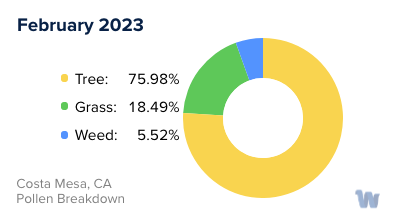

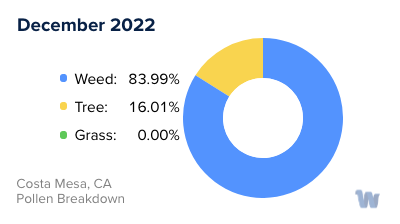
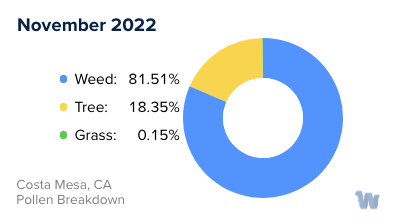
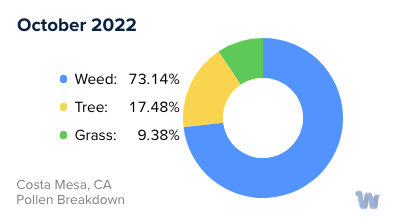
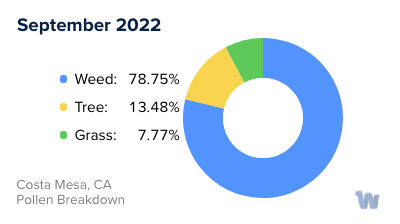
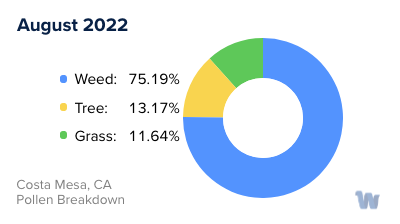

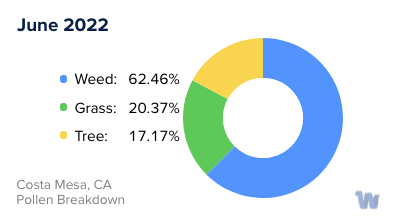

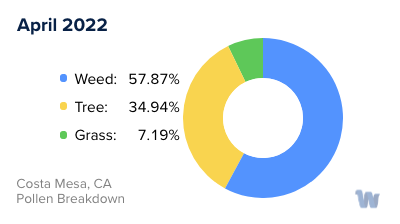

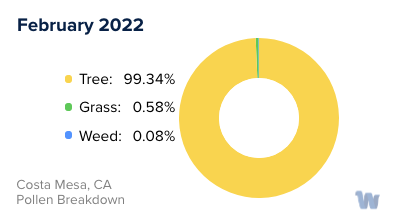
Pollen and Hay Fever in Costa Mesa, CA
Pollen allergies, commonly known as hay fever, are a prevalent concern for many residents of Costa Mesa, California. Located in Southern California, the city's climate and diverse plant life contribute to a significant presence of various pollen types throughout the year. Understanding the types of pollen and the seasons they are most active can help individuals better manage their allergies and minimize discomfort.
One of the primary pollen culprits in Costa Mesa is tree pollen. In the early spring, when trees begin to bloom, allergenic species such as oak, pine, and eucalyptus release large amounts of pollen into the air. These fine particles can easily be inhaled and trigger allergic reactions in susceptible individuals. The tree pollen season typically lasts from February to May.
As the trees wind down their pollen production, grass pollen becomes a prominent allergen during the late spring and early summer. Common grass species in Costa Mesa, such as Bermuda grass and Timothy grass, release their pollen into the air, affecting allergy sufferers. This period, typically from May to July, can be particularly challenging for those sensitive to grass pollen.
In the late summer and fall, weed pollen takes center stage. Weeds like ragweed, sagebrush, and lamb's quarters release large amounts of pollen into the air, causing discomfort for individuals with hay fever. The weed pollen season usually begins in August and lasts until November, with peak levels occurring in September.
It's important to note that Costa Mesa's mild Mediterranean climate allows some plants to produce pollen year-round. This means that even during the winter months, individuals with pollen allergies may still experience symptoms, albeit at lower levels.
By understanding the types of pollen and their respective seasons in Costa Mesa, residents can be better prepared to manage their allergies. Monitoring local pollen forecasts and staying informed about pollen levels can help individuals plan outdoor activities and take necessary precautions to minimize exposure.

